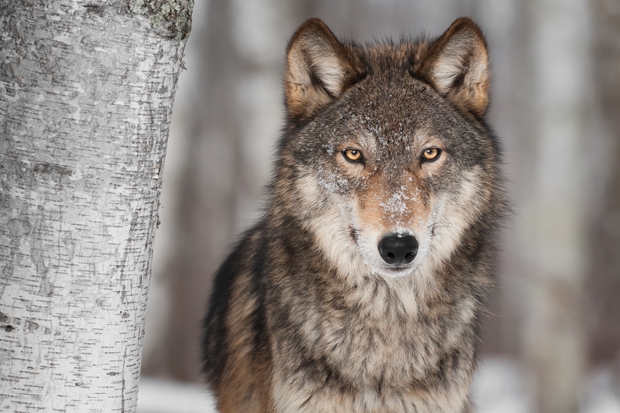A year ago there was a confirmed sighting, and even film, of a wild wolf in the Netherlands for the first time in perhaps 150 years. It was hanging out near a farm, a few kilometres from the German border in the north-east of the country, looking bored. A couple of years previously a dead wolf was found 40 miles to the west, well inside the Netherlands, but the locals thought it was probably a hoax. Almost certainly it wasn’t. Wolves are doing well in western Europe — there have been plenty of sightings in neighbouring Belgium, for example. France, Italy, Switzerland, Portugal, Spain and Germany have reasonably healthy populations and there are a few score in Scandinavia, too. Mostly they are isolated packs, though, some of them the consequence of reintroductions (i.e. rewilding).
Nobody is terribly worried about any of this. Farmers get compensation for sheep predations and the rest of the population seem very happy to have these animals in their midst, because despite their fearsome reputation, there have been only eight fatal attacks upon humans in all of Europe and Russia combined in the last 50 years. Compare that to attacks by cows (74 deaths in 15 years in the UK alone). It is good news that the wolves are now spreading of their own volition. Perhaps those packs will be isolated no longer. Isolated packs run the risk of chronic inbreeding and deformities, which has happened in Michigan.
They still can’t get across the channel, though, despite Eurostar. They will need our help. I was thinking about this when I read Melissa Kite’s attack upon ‘rewilding’ in last week’s magazine, which seemed to suggest that the only animal allowed to exist in this country should be her bloody horse, clip-clop.









Comments
Join the debate for just £1 a month
Be part of the conversation with other Spectator readers by getting your first three months for £3.
UNLOCK ACCESS Just £1 a monthAlready a subscriber? Log in